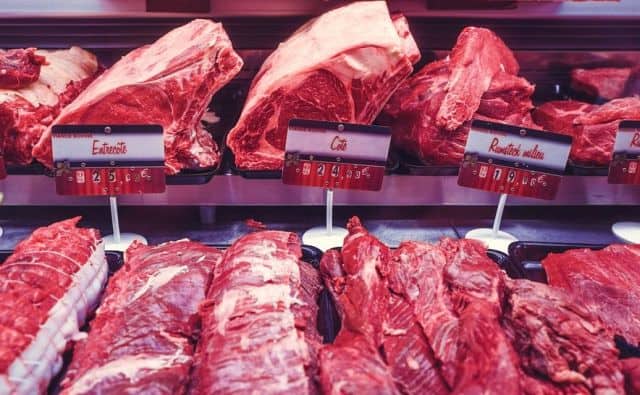In a slow cooker, the food is slowly cooked at a temperature of at least 165 Fahrenheit to a maximum of about 200 Fahrenheit. At these low temperatures, the food is cooked gently and meat dishes such as stews or chiles are particularly tasty. Most slow cookers have 3 temperature levels to cook at, some models also have a keep warm level.
And yes, even if the temperature at which a slow cooker cooks is lower than regular cooking on the stove, it is hot enough to kill bacteria and germs, and the food will cook and be done. Slow cooking food at low temperatures for a long time is just another method of cooking.
The actual temperature will also depend on the level of food in the pot. Obviously, a low filled pot will become hot quickly and reach a higher temperature than a full pot.
What temperature does a slow cooker cook at?
- Low: about 165 degrees Fahrenheit. The minimum temperature for safely and slowly simmering food.
- High: about 195 to 200 degrees Fahrenheit. This setting is meant to be below the boiling point of water (212 F). If food in the pot may start to bubble at the pot wall, that’s OK. If it bubbles everywhere in the pot then it is “regular” cooking with its respective changes to food. Avoid this, better switch to:
- Medium: this level simmers the food somewhere at temperatures between low and high.
But what is actually way more important – than the questioning: what temperature does a slow cooker cook at – is how those temperature settings affect cooking time.
Different slow cookers cook differently. You need to get to know your slow cooker and learn how long to cook food in the slow cooker for best results.
As a rough rule of thumb, one hour HIGH equals about 2 hours on LOW.
If the pot is full to the brim cooking will take a bit longer, if the pot is only half full temperatures in the pot become higher, and cooking may be quicker.
What happens when you slow cook meat?
Slow cooking produces delicious meals and especially meat can turn out to be incredibly tender and juicy. When the meat is cooked at low temperatures several processes take place. The most notable when slow cooking is:
- over 140 degrees F – protein molecules break up and lose moisture, this process is called Protein-coagulation. Many foods we cook for consumption are made of proteins. When they are heated the proteins break down and lose water, the more water that’s lost, the dryer and harder a piece of meat gets. Obviously, a higher temperature will evaporate more water than the low temperature in the slow cooking process.
- at around 160 degrees F – the collagen, the main protein component of connective tissue, turns into gelatin, meat cuts become juicy and tender
In regular cooking where the boiling temperatures of water (212 F) is reached, the water turns into steam and evaporates. As water is in most foods, cooking them at high temperatures dries them out.
What happens in a Slow Cooker?
When a roast or a large meat cut is heated we aim to maintain the core temperature of the meat cut at an ideal temperature of about 165 F. This assures the coagulation of the protein and the collagen conversion of the connective tissues into gelatin. However, the larger the temperature gradient between the meat cuts outside and the inside is, the larger the loss of water and the drier the result is. Timing is everything here.
When slow-cooking meat at low-temperature, this temperature gradient is very little. The perfect cooking time plays a much smaller role as the ideal temperature cannot be exceeded at all. Most of the liquid remains in the meat and can be absorbed by the connective tissue turning into gelatin. The meat becomes soft and tender.
What meat cuts are suitable for slow cooking
 Generally, any meat is suitable for a slow cooker. However, expensive and lean meat cuts such as fillet and back of veal, prime cuts of beef, pork, lamb, and game may be better be on the BBQ or other conventional cooking methods as this may produce better results.
Generally, any meat is suitable for a slow cooker. However, expensive and lean meat cuts such as fillet and back of veal, prime cuts of beef, pork, lamb, and game may be better be on the BBQ or other conventional cooking methods as this may produce better results.
Slow cookers are great for cooking more affordable cuts of meat, anything that has a lot of connective tissue, tendon or cartilage. The longtime at low temperature in a slow cooker will turn the tough connective tissues into soft and juice gelatin. As a result, even lower quality and cheaper meat cuts become part of a juicy tasty dish.
Best are Beef brisket, chuck steak, lamb shanks, pork shoulder, chicken tights…
